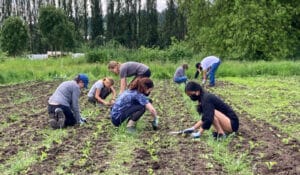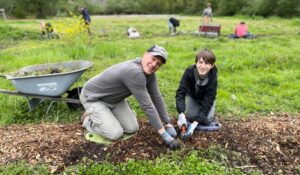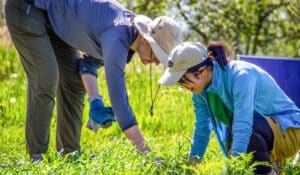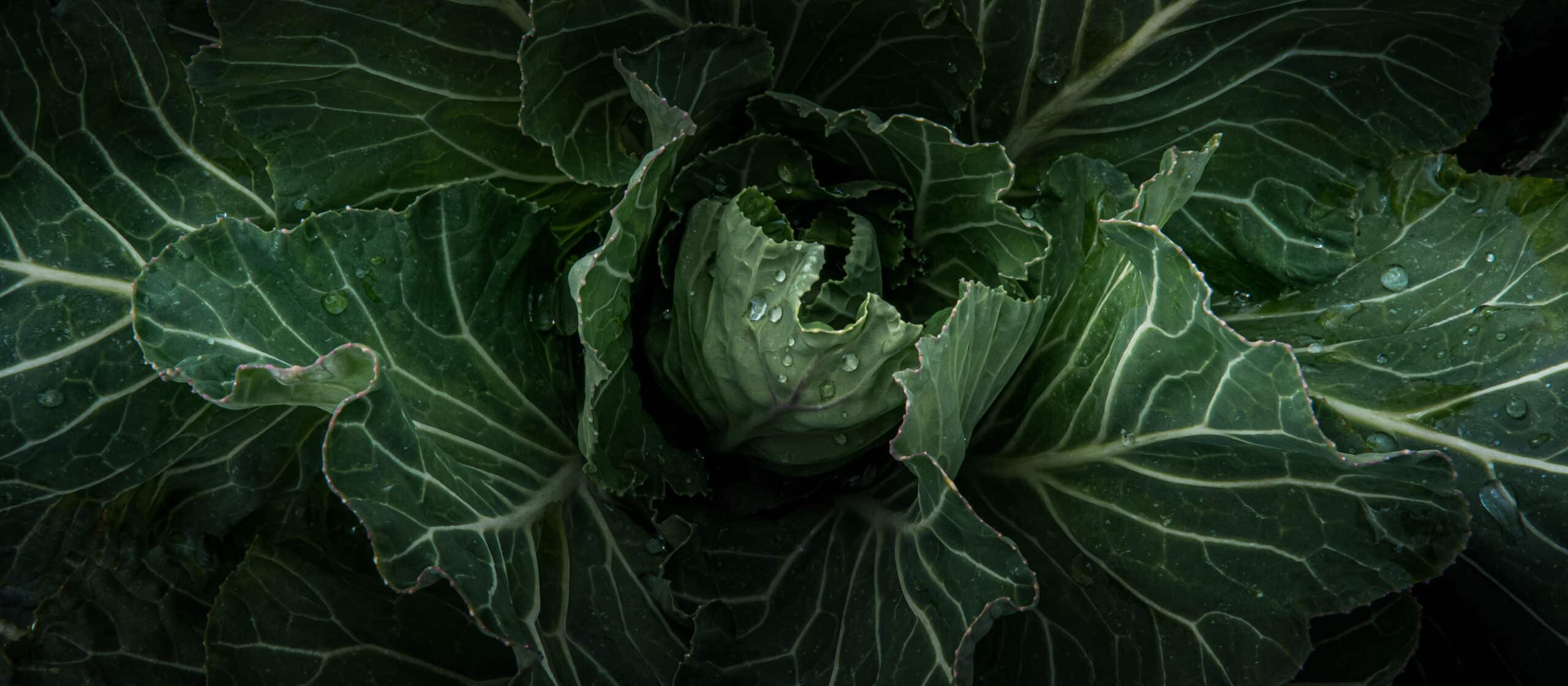
Fall Planting in the Pollinator Garden for BEEvesting
Fall Planting in the Pollinator Garden for BEEvesting
- posted on: September 25, 2020
- posted by: Robin Crowder
"*" indicates required fields

Kevin Sander here. I’m a volunteer leading the planning for the BEEvesting pollinator garden.
The first signs of autumn are among us, and that means it’s almost time for fall planting. A lot of people might not think of this cool and rainy season as the time to start a garden, but in many ways it is as full of opportunity as the spring. The long droughts of summer are behind us and the frosts of winter are still a ways away. It’s a good time to set down roots.
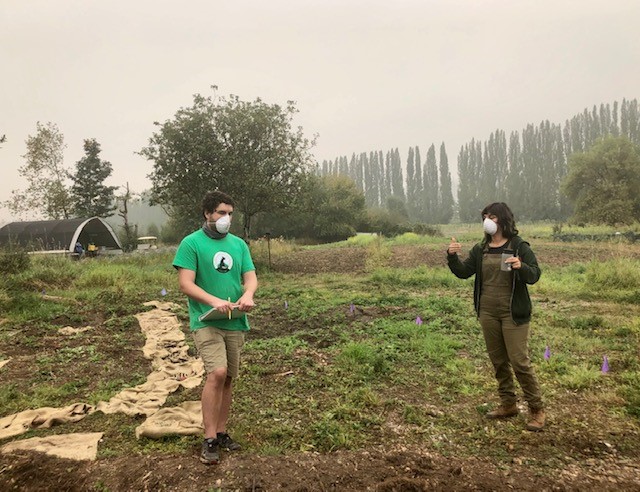
Many of our native PNW shrubs and trees are great options to plant in fall. Planting in autumn gives them the chance to establish themselves and grow their roots over winter. By the time spring rolls around, they are feeling good in their new home. This is great news for our native pollinators too.
Take our local, yellow faced bumble bees. Queen bumble bees lie dormant over winter, hibernating until the flowers of early spring have sprung. After months of waiting, you can imagine how hungry she must be! That is why having some early blooming plants in your garden, like currant, yarrow, or even Oregon grape, can be so important for your local bees. Plant them in fall, let them establish over winter, and they can be just what a queen bumble needs early in the spring to start her colony.
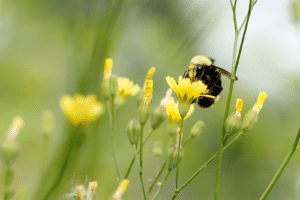
Here at 21 Acres, we are preparing our pollinator garden for a fall planting. The roughly 50×50 foot space is big – a lot of work still needs to be done before planting in October. With the help of the farm’s hogs, the space was first cleared of overgrown weeds, although many still had to be removed by hand (blackberry, ugghh). The next step is to amend the soil by mixing in compost.
The flags mark the perimeter of the pollinator garden. Burlap was placed down to mark our paths before we cover them with mulch. The garden is split into thirds with an open area in the center that can be used as a teaching space or simply a quiet place to enjoy surrounding blooms and pollinators.
On October 17th, we will hold our first planting event. Focusing on shrubs, trees, and other native plants that are comfortable getting through our long, wet winters, we can make our garden immediately useful to pollinators when spring finally gets here. Then, once spring is here, we can do another round of planting, expanding the garden and diversifying the flora.
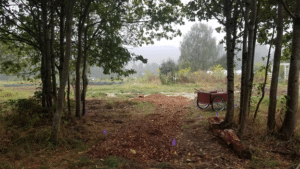
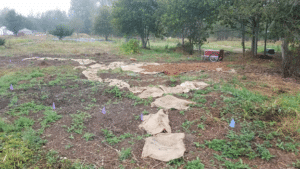
The view from the center of the garden will overlook the 21 Acres farm, sure to be more beautiful when it is framed by our pollinator-friendly blooms… and without the smoke from summer fires!
Funding in part for this project was generously provided through a King County Community Service Areas grant.











 back to blog overview
back to blog overview

